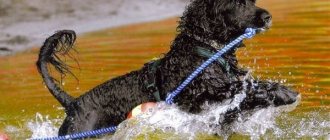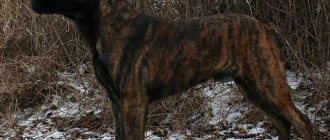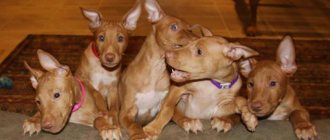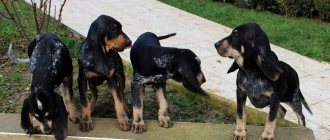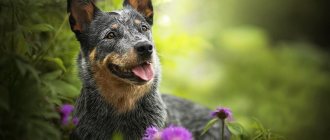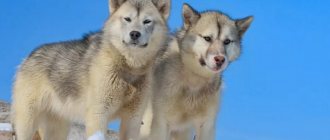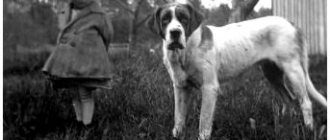13 May61601canine familypredatordingo
Dingo is a secondarily feral domestic dog, a representative of the Canidae family from the genus of wolves. The dingo is one of Australia's most famous animals. The dingo dog has a mysterious origin and is highly intelligent. In this article you can see photos and descriptions of dingoes and learn a lot of new and interesting things about the life of this wild dog of Australia.
Geographical range
The main wild populations are found in Australia and Thailand, with several groups found in Myanmar, Southeast China, Laos, Malaysia, Indonesia, Borneo, the Philippines and New Guinea.
Once in Australia, dingoes were distributed throughout most of the continent, but they never reached the shores of Tasmania. Following European colonization and large-scale development of pastoralism, there was a concerted effort to remove dingoes from farmland. Special fences were even built to prevent dingoes from entering herds of sheep. This barrier prevents them from entering most of South Australia, New South Wales, Queensland and Victoria. However, wild individuals are still found in some of these areas.
Throughout the rest of the Australian continent, dingoes are found everywhere, with the exception of the arid eastern part of Western Australia, nearby parts of South Australia and the northern mainland.
Appearance and features
Photo: Wild dog dingo
The animal is of medium size when compared with other dog breeds. They have a length of 50-60 cm (females are slightly smaller), weight 13-19 kg. The wedge-shaped head seems a little large relative to the body, but is elegant. A high skull with a developed occiput, flat and wide between the ears, tapering towards the nose. Black nostrils are open (in light dogs they are liver-colored). The powerful lower jaw is clearly visible. Lips cover teeth. Scissor bite with complete dentition.
Video: Dingo
The eyes are almond-shaped, set slightly askew, medium in size, dark in color. The ears are triangular, stand upright with a rounded tip, are very expressive and are located at the top of the skull. The well-developed, muscular neck is of moderate length, and the head is set high on it. The animal's back is straight and strong, its chest is light. The croup is wide and angular, with sufficient length from hip to hock to act as a spring for jumping, as an effective lever for developing speed. The paws are oval, with fur between the pads.
The tail is well developed and widens to the middle of the length, and then tapers towards the end. Individuals in the northern regions of the continent have fur with an undercoat and coarse outer protective hairs; dogs from the southern regions have no undercoat. The color is reddish, cream with a golden tint, brown, and there are black specimens. There may be a mask of a lighter color on the face, and there is also a lighter shade on the throat, belly and under the tail. Black and brown dingoes may have light-colored spots on their legs, chest, cheeks, and eyebrows. This is a very smart animal, curious but cautious. It is resilient and reacts instantly to stimuli. The dogs are independent by nature, but they know how to behave in a pack.
Interesting fact: Twice a year, dingoes make a voyage to the sea coast. Individuals living in New South Wales also climb mountain paths to New England and other ridges of the Australian Alps twice a year in April and November.
Habitat
Dingoes prefer forests and grasslands extending to the forest edges. They can be found in deserts, tropical swamps, snow-capped mountain peaks, plains and coastal scrub. Australian wild dogs make dens in caves, rabbit holes or hollow logs, all in close proximity to water .
Photo: David Clode
Most Asian populations live near villages, where people provide them with food and shelter in exchange for protecting their homes.
- Habitat: tropical
- Terrestrial biomes: forest, suburb, desert, plains, mountains, coastal
Characteristics
Appearance
The dingo has a wide, long, slightly tapered head. The muzzle is square with erect, pointed ears and narrow eyes. The tail is fluffy, saber-shaped. In terms of body structure, this species resembles domestic dogs (primarily hounds), although it is not a subspecies of them. Dingoes are more closely related to gray wolves , as indicated by their long fangs and demeanor. No wonder the dingo is Australia's largest predator.
Coloring
The color of a dingo's coat is largely determined by where it lives. The “standard” coat color is red with white paws. However, in desert areas the fur is golden yellow, while in forested areas the fur can range from dark brown to black. The hair on the body is short and the tail is quite thick.
Photo: UNSW Newsroom - UNSW Sydney
Dimensions
Adult males from Australia are generally larger than females , weighing from 11.8 to 19.4 kg and having an average body length of 92 cm. Females weigh from 9.6 to 16 kg and have an average body length of 88.5 cm. Shoulder height is from 47 to 67 cm. Individuals from the north of Australia usually exceed the size of their southern relatives.
Dingoes of both sexes from Southeast Asia are smaller than their Australian counterparts, likely due to the predominantly carbohydrate diet compared to the high protein diet of Australian dingoes.
- Length from nose to tail tip: 112-160 cm
- Shoulder height: 47-67 cm
- Body weight: 9.6-19.4 kg
What does a dingo look like?
Dingo looks like an ordinary dog with a good constitution. But a wide head, erect ears, a fluffy long tail and large fangs distinguish the dingo animal from an ordinary dog. The physique of this wild dog of Australia resembles a hound, so the dingo looks very athletic.
The dingo appears to be a robust, medium-sized dog. The height at the withers of the Australian dingo varies between 50-70 cm, with a weight from 10 to 25 kg. The length of the body, including the head, is from 90 to 120 cm, and the length of the tail is 25-40 cm. Females are smaller than males. The Australian dingo looks much larger than the Asian one.
Dingo looks quite fluffy, because its short fur is very thick. Usually the dingo dog has a red or reddish-brown color, but its muzzle and belly are always much lighter.
Occasionally, almost black, white or spotted dingoes can be seen. In addition, the dingo animal often interbreeds with domestic dogs, but such individuals are considered hybrids. In addition, purebred individuals cannot bark, but can only howl and growl like a wolf.
Behavior and lifestyle
The behavioral traits of dingoes are the same as those of most primitive dogs. Young adults are often solitary except during mating season. They can also form close associations to hunt large prey.
Photo: Jurgen & Christine Sohns
Adults form stable flocks of 3 to 12 individuals with varying levels of social interaction. The size of the flock depends on the size of the prey most common in their territory. Rival packs interact little. Typically, flocks remain in their personal territory, moving away from the den by 10-20 km per day . In the warmer areas of their range, dingoes are nocturnal.
Dingoes defend their territory from other packs. There is usually a pair of an alpha male and a dominant female, to whom the other members of the pack are subordinate. Males predominate over females. Lower ranked pack members become aggressive towards each other as they compete for a higher ranking position.
Social pack
0
Like wolves, Dingo dogs live in packs of 5-13 dogs. All social life is built around one dominant pair: only they can have new puppies and only they make the decision to move the pack to new lands. The alpha male takes his position while he is strong, but his end is predetermined - as soon as a more severe and stronger dog appears, he displaces the leader.
Communication
Photo: Russell Mcphedran
Dingoes rarely bark, and purebred individuals do not know how to do this at all. They tend to growl and howl like a wolf, especially at night, to attract pack members or scare away potential intruders. There are other forms of communication used to mark territorial boundaries:
- friction with aromatic glands;
- defecation and urination on objects such as tree bark and grass tussocks.
Eating habits
Dingoes are opportunistic carnivores . Their diet consists of 60% mammals, especially rabbits, kangaroos, wallabies, opossums and wombats. The rest of the diet consists of birds and reptiles. On occasion, the dingo may eat sheep, calves (cows) and other domestic and farm animals. Food options include fish, bandicoots, echidnas, crabs, skinks, insects, fruits and other plant material. They also do not disdain carrion, including the carcasses of penguins and seals washed ashore.
Photo: The Australian
All Asians live in close association with people, so much of their diet consists of food scraps, including cooked rice, raw fruit, and small amounts of chicken, fish or crab meat. Some individuals in Thailand have been observed hunting lizards, rats and insects.
Dingoes hunt small prey alone . When pursuing large prey (kangaroos, sheep and cattle), they will hunt in pairs or family groups, where they will attack the prey from multiple angles until they are able to disorient and destroy it.
It is believed that dingoes contributed to the extinction of mainland Tasmanian tigers and Tasmanian devils by becoming their successful competitors for available food sources.
What does a dingo eat?
Photo: Australian Dingo
The dog, having arrived in Australia, did not encounter any other serious predators except marsupial wolves and the Tasmanian devil, and therefore easily settled throughout the territory and hunted animals of suitable size. They completely ousted their competitors from the continent.
Just over half of the dog's diet consists of small mammals such as rats, rabbits, possums and wallabies, and it preys on larger kangaroos and wombats. About 40% of the menu consists of birds, reptiles, amphibians, fish, crustaceans, carrion, and insects.
Kangaroos are faster and larger than dingoes, but a pack of dogs can chase a marsupial mammal for hours, replacing each other at a distance and taking advantage of respites. The kangaroo gets tired of prolonged pursuit and cannot stand it. Dingoes in a flock always take turns during meals. The biggest and most dominant members get the best cuts.
Interesting fact: A flock of dingoes of 12-14 individuals, attacking sheep, can destroy up to 20 heads at once without eating them. The share of livestock in the diet is about four percent and the main part is poultry: chickens, ducks, geese, turkeys.
Dingoes also hunt emus, which are many times taller than them. During the jump, the dog tries to grab the bird's neck, as close to the head as possible. The emu, noticing the danger, makes high jumps and tries to push the predator away with its foot. Dingoes are not always tough on such large and agile prey, and therefore the dog does not pose a serious threat to this bird. In the countries of Indochina, the dingo menu contains more human food waste: rice, fruits, fish, chicken. Sometimes they hunt rats, lizards, and snakes.
Breeding season
In most cases, only the alpha pair reproduces. When other females come into heat, the alpha female prevents them from breeding with males. If another female has a litter, the dominant female kills her young, so only the alpha female's genes are passed on to the packs. Dominant pairs tend to mate for life . Other pack members help care for the alpha pair's cubs.
Photo: Queensland Times
Dingoes produce one litter of pups per year. Their mating season varies depending on latitude and seasonal conditions. In Australia, dingoes mate from March to April, in Southeast Asia - from August to September. The gestation period is 63 days, and total litter size varies from 1 to 10 individuals, with an average of 5 young . Males and females mate in the second or third year of life.
In most cases, estrus occurs once a year, although some females have it twice, the second time during pregnancy. Males can breed at any time of the year, but their fertility decreases over the summer.
Dingoes and domestic dogs interbreed freely, and wild populations are largely hybridized throughout their range, except in Austrian national parks and other protected areas.
- Mating system: monogamous
- Breeding season : March-April or August-September, depending on the region of residence
- Breeding interval: once a year
- Range of number of offspring : 1 to 10 cubs
- Average gestational age: 9 weeks
- Average age of sexual or reproductive maturity : 22 months
Where do dingoes live?
Photo: Dingo in Australia
This species of wild dog can be found throughout Australia. The northern part is the most densely populated. In the very middle of this area, the habitat of a large tongue descends to the south in the central part of the continent, and also covers the western part in a semicircle. Here dingoes can be found most often, although in other regions this animal is not uncommon. Small isolated groups live in New Guinea and some countries in Southeast Asia:
- Myanmar;
- Thailand;
- Laos;
- Borneo;
- Philippines;
- Malaysia;
- Bangladesh;
- southeast China.
For settlement, dogs prefer eucalyptus forests and semi-deserts. In wooded areas, they make beds and dens under the roots of trees, under dead wood, in dense thickets of bushes or grass, in crevices and rocky caves. Also, dogs often occupy empty animal burrows, which become prey for dingoes. They give preference to places located near rivers and other sources of fresh water. Dingoes often settle near human habitation, where they can easily find food in landfills or by hunting domestic animals.
Fun fact: Australia has the longest fence in the world, called the Dingo Fence. It separates the southeast of the mainland from the rest and is designed to protect agricultural pastures from dog invasion. The height of the mesh fence is 1.8 m. On both sides, a five-meter zone is cleared of vegetation. The supports are wooden posts. Some places have lighting and are powered by solar panels.
The fence was originally erected in 1880 to stop the spread of rabbits, but it was a futile endeavor and by the early twentieth century the structure had collapsed in many places. But then some states decided to restore the fence to prevent wild dogs from attacking sheep. So in 1932, the Queensland government purchased 32 thousand km of mesh to restore the fence. By the forties, individual sections were united into a single chain, and the total length was about 8.6 thousand km. Now the structure exceeds 5.6 thousand km. It costs up to $10 million to maintain it.
Now you know where the dingo lives. Let's see what a wild dog eats.
Cubs development
Photo: www.australiandoglover.com
The dingo is a placental mammal , meaning it gives birth to live young that are fed milk through the mammary glands. The young are raised in hollow logs, rock shelters, old rabbit holes or wombat dens. Both parents are involved in the process of nurturing the offspring.
Puppies first leave the birth den at three weeks of age. Puppies are weaned after approximately two months, after which the young remain with their parents for up to 12 months. are accompanied by adults on longer trips . The transition from milk to solids begins at 9 weeks and is usually completed at 12 weeks of age.
Dingo pups are fully grown by seven months, and by 10 months they leave the pack as the next mating season begins.
Deworming
Regardless of the conditions in which the animal is kept. The risk of parasite infection is always quite high. Therefore, dogs and puppies need to be dewormed once a quarter for preventive purposes. In this way you can protect yourself and other pets from possible infection. This is of particular importance before mating, since infection with parasites can occur in puppies in utero through the bloodstream and when feeding on mother's milk.
Puppies can be wormed starting at 3 weeks of age. For them, parasitic infections are very dangerous; they can lead to developmental delays and even death. Oddly enough, most often pets become infected from their owners.
Role in the ecosystem
Dingoes are the main carnivorous mammals of Australia. They compete with foxes and wild cats for small animals, but dingoes are more successful at catching large prey during droughts than foxes and cats. For this reason, dingo populations remain large and are believed to be responsible for the demise of numerous medium-sized Australian mammals. However, some researchers suggest that wild dogs, on the contrary, help maintain populations of small Australian mammals. Dingoes are also valued for their help in controlling populations of European rabbits and feral pigs, which are pests throughout Australia.
Meaning to people
Dingoes are of little economic importance in Asia, although some regions consume them as a primary source of protein and sell cuts of dog meat in the market for edible and medicinal purposes.
On the other hand, in Australia, millions of dollars were spent on building and maintaining a 5,614 km long fence to keep dingoes out of South-East Australia's sheep farming region.
Photo: Daily Mail
Within the fence, dingoes are considered pests and are regularly shot for rewards (up to $500). Farmers claim that wild dogs seek out sheep for food, although research has shown that they prefer natural food sources and only seek out domesticated animals when natural food sources are scarce. It is estimated that sheep and cattle make up only four percent of their diet.
Australian dingoes: historical background
The dingo, a half-wolf, half-dog, appeared in Australia more than 5,000 years ago. Perhaps it was brought from Asia, where, according to archaeological research, the oldest remains of this species were found. On the Australian continent, the most ancient finds are dingo skulls approximately 3.5 thousand years old.
The dingo is considered a re-feral dog. Brought to the green continent, it again learned to do without humans, and the abundance of food and the relative absence of enemies contributed to the spread of the breed throughout the entire continent and even to nearby islands. After the disappearance of the wolf and devil marsupials that previously inhabited the territory, dingoes remained the only predators until the arrival of Europeans, who brought dogs and jackals.
The Australian dingo is stronger, larger and heavier than its South Asian relatives, which is due to its rich diet, full of essential proteins, vitamins and other substances. In Asia, these dogs feed mainly on food waste, so they settle mainly near landfills, not far from human habitation.
In Australia, at one time, the growing population of wild dingo dogs acquired alarming proportions, and individuals began to attack domestic animals, in particular sheep. In addition to the fact that the inhabitants of livestock farms made up 4% of the dingo’s diet, they also destroyed the livestock by simply cutting it out and not eating it. That is why farmers declared a hunt for these dogs, setting traps and scattering poison (mainly strychnine).
Today it has been proven that dingoes are an important part of the Australian ecosystem and their destruction threatens disaster, so to protect against dog attacks on herds, it was decided to build a fence that protects not only livestock from attacks, but also protects pastures from another scourge of Australia - rabbits. Now the length of this fence exceeds 5 thousand kilometers, and the cost of its maintenance is more than 15 million local dollars
Animals that get past the fence are destroyed.
Purebred dingoes do not attack people; cases of attacks are isolated. Their crossbreeds with wild dogs pose a particular danger. These mestizos are angrier, more aggressive, they can attack people, and they breed not once a year, but twice.
Save Status
The introduction of agriculture by early European settlers and fear of livestock predators led to a decline in the range of Australian wild dogs. The Australian government only protects dingoes in national parks and reserves. In many public places they are considered pests and subject to human control measures.
Although the dingo is not considered endangered, purebred populations in Australia and Asia are at risk of complete hybridization due to interbreeding with domestic dogs. Interbreeding often results in offspring that pose a greater risk to sheep farming (as they breed twice as often as purebred dingoes) and are more dangerous than domestic animals due to their innate aggressive behavior.
Australian Conservation Societies are established to protect, train and breed purebred lines of dingoes. The general public is prohibited from owning dingoes as pets.
The history of the dingo dog
There are many versions and legends surrounding the origin of the dingo dog breed. Some argue that the dingo animal was brought to Australia by immigrants from Asia. Others believe that the wild dingo dog evolved from domestic Chinese dogs. And according to others, it is said that the Australian dingo is a descendant of Indian wolves. We also know the animal dingo from the story by R. Fraerman, entitled “The Wild Dog Dingo, or the Tale of First Love,” which was written in 1939.
The history of the dingo dog is full of mysteries and secrets. The most common version of the origin of the dingo dog breed is considered to be the one in which it was brought from Asia. The dingo dog was brought to the mainland in boats by fishermen who sailed from Asia more than 5 thousand years ago. The dingo dog breed spread very quickly and became a faithful assistant for the aborigines of Australia. Dingo dogs guarded a person's home and helped him hunt. However, over time, people abandoned their faithful dogs, and then they went wild.
When the owners abandoned the dingoes, they had no choice but to develop the territory of the mainland. The conditions for independent living turned out to be very favorable. Dingoes soon spread throughout the entire continent, including the adjacent islands. This dog of Australia is the mainland's main mammalian predator and plays an important role in the ecology of the continent. Australian dingoes regulate the continent's herbivores and rabbit populations.
In the 19th century, Australia began to actively develop sheep farming. Since dingoes hunted sheep and caused damage to the farm, they began to be shot, poisoned and caught in traps. But already in the 1880s, in order to fence off areas of sheep pastures and protect livestock from dingoes, the construction of a “dog fence” began. Later, individual sections of the fence were joined together to form a barrier that was only interrupted by the highway.
Now the fence is more than 5 thousand km long and separates the arid part of Australia from the fertile one. The fence is maintained annually, and along it there are patrols that repair damage to the fence and destroy animals that have penetrated the fence.
It is believed that purebred dingoes do not attack people, but there are exceptions to any rule. Cases of an Australian dingo attacking a person are extremely rare. One such case in Australia in 1980 was the death of a nine-week-old girl who was dragged away by a dingo.
It is not customary to keep these dogs at home, and in some countries it is completely prohibited to keep dingoes as a pet. But some people still get these animals. They claim that the Australian dingo is an excellent and unpretentious dog that is loyal and gets along well with other dogs living in the house.
In captivity, the dingo animal does not take root well and often escapes, although some Australians manage to tame them. Of course, it is best to tame a dingo as a puppy; it is almost impossible to tame adults. It should always be remembered that this dog of Australia is primarily a wild predator and can be quite unpredictable.
Don’t forget to subscribe to updates on our website and join us on social networks (Vkontakte, Odnoklassniki, Instagram) so you don’t miss anything and always stay up to date with all the news!
Don't forget to share with your friends!
Did you know?
- Dingoes live up to ten years in the wild and up to 13 years in captivity.
- There are approximately 10,000 purebreds in the wild.
- Crossbreeding with domestic dogs has resulted in dingoes with unusual colors, such as black or white flowers.
- The dingo is believed to have evolved from a dog similar to the New Guinea Singing Dog.
- Dingoes have very flexible wrists that allow them to grasp prey; it also gives them the ability to open doors and gates that dogs or wolves could not get through.
- Dingoes can respond to signals and gestures from people, which wolves are not capable of.
Training
Dogs with an extremely complex character and innate distrust of people are very difficult to tame. You shouldn't expect loyalty from them. At best, the dog will cooperate. True, there are no rules without exceptions. If the dog was adopted at an early age, then an experienced dog breeder can raise it into a completely domestic dog. Training, first of all, concerns getting used to a collar and leash, which can become a big problem for the owner. First, these accessories need to be offered to the dog as toys, so that after biting them, he understands that the things do not pose a danger, and allows him to put them on himself.
The dog also needs to be introduced to people early. Only then can one count on adequate behavior as an adult.
